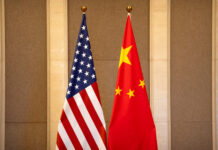It started with just one article in a not particularly well-known publication.
INCPak, is short for the Independent News Coverage Pakistan, a news aggregator of sorts that started in 2012. A cursory look at its homepage indicates a lot of news about Pakistani celebrities and a significant amount of technology related news. It also has a dedicated section for automobiles.
And on December 27, the website published the article: “Ghandhara Industries plans to introduce Chery Tiggo 8 in Pakistan.” The article went on to say that the Ghandhara Industries Ltd was to enter into an agreement with the China-based Chery Automobiles to distribute and manufacture its sports utility vehicles (SUVs) in Pakistan.
The Chery Tiggo 8, is a seven-seater mid-sized crossover SUV, first introduced in 2010, and is popular in China. According to the article, the SUV would compete with other existing SUVs in the country, like the Hyundai Tucson and KIA Sportage. After providing details of the car’s features, the article innocently ended with “Tell us what you think of this upcoming addition of Chery Tiggo 8 in Pakistan?”
Well, we can tell you what Ghandhara Industries thought of this upcoming addition: that it was complete nonsense. According to a notice issued to the Pakistan Stock Exchange on December 31, the company had to explain itself to the PSX (which had enquired about the news on December 28). Ghandhara Industries has not, in fact, entered into any negotiations or contract written or otherwise with any company to introduce Chery Tiggo 8.
“The media reports, including the news item in INCPAK are baseless and have no legal standing,” the company stated emphatically.
One can see why the company had to issue a statement: in the few days since the article, the news had spilled over into multiple niche websites that cater to auto enthusiasts. But the letter only seemed to cause more confusion. That is because there were now other media reports that it was in fact Ghandhara Nissan that was introducing the SUVs, not Ghandhara Industries.
But wait, are those the same companies? Why are there two companies called Ghandhara anyway? Is one a subsidiary of the other? Is Ghandhara Nissan even bringing these SUVs to begin with?
Let us try and parse who is who. [restrict paid=”true”]
First, forget about Ghandhara for just a moment. Start with, instead, the Bibojee Group. The conglomerate was started by family patriarch Habibullah Khan Khattak. Born in 1913 in Wana, South Waziristan, he had spent his entire life grooming for the top position of the Pakistan Army, the Commander-in-Chief (this position is now known as the Chief of the Army Staff or COAS).
And yet in 1958, when Ayub Khan made himself Field Marshal and President of Pakistan in the country’s first coup, he picked Muhammad Musa Khan for the top position. Khattak, following the long standing tradition of the armed forces in Pakistan of resigning when a junior officer is promoted to the top job, was in effect forcibly retired at the age of 46.
So much for the military career. But while Musa Khan went on to lead the Pakistan Army in the 1965 war with India, Khattak set his sights on becoming an industrialist. Known as ‘Bibo’ to his friends and family, he literally named his conglomerate the Bibojee Group, which includes three cotton spinning mills (two were measured last year), a woolen mill, an insurance company, and a construction company.
But the crown jewel of the group are the two automobile companies. While Khattak may have picked a folksy nickname for the conglomerate, he picked a grand name for the auto companies: Ghandhara, after the ancient kingdom in the Peshawar Valley mentioned in the Sanskrit epics Mahabharata and Ramayana.
The older of the two Ghandhara companies is Ghandhara Industries, which in 1963 took over the operations of General Motors Overseas Distribution Company (which had started in 1953). Initially, it focused on Bedford trucks, and Vauxhall cars. In 1972, the company was nationalised, renamed National Motors, and also started manufacturing Toyota cars.
In 1984, National Motors added Isuzu vehicles to its portfolio of products, which was just as well, since the Toyota manufacturing line had been re-privatised and handed over to the House of Habib’s joint venture with the Toyota Motor Company. In 1992, Khattak re-acquired his company, just two years before his death and changed its name back to Ghandhara Industries.
The other company is called Ghandhara Nissan Ltd, and that was incorporated in 1981. It was started as a reaction to the fact that Khattak’s old company had been nationalised – not knowing he would buy it back in the 1990s. Ghandhara Nissan was converted into a public limited company in May 1992.
Now, both companies are part of Bibojee Group. The group has a 58% share in Ghandhara Nissan, and a 39% share in Ghandhara Industries. Ghandhara Nissan also has a 19% share in Ghandhara Industries. The key difference is that Ghandhara Industries makes and sells Isuzu trucks, buses and pick ups, while Ghandhara Nissan manufactures JAC Trucks, and imports and sells Nissan, Dongfeng and Renault vehicles.
Neither company has announced to the PSX that it is bringing in the Chery Tiggo 8. However, it is Ghandhara Industries that has categorically denied the fact. The jury is still out on Ghandhara Nissan: reports persist that it will introduce new SUVS. Ghandhara Nissan is tight-lipped so far, but it did send a cryptic notice to the PSX on December 24 saying only this: that they were in discussions with stakeholders on some new business prospects, and that formal arrangements had not been decided yet. That could mean, well, anything. But clearly something is being planned at Ghandhara Nissan.
Just not at Ghandhara Industries (and don’t you forget it). [/restrict]
























